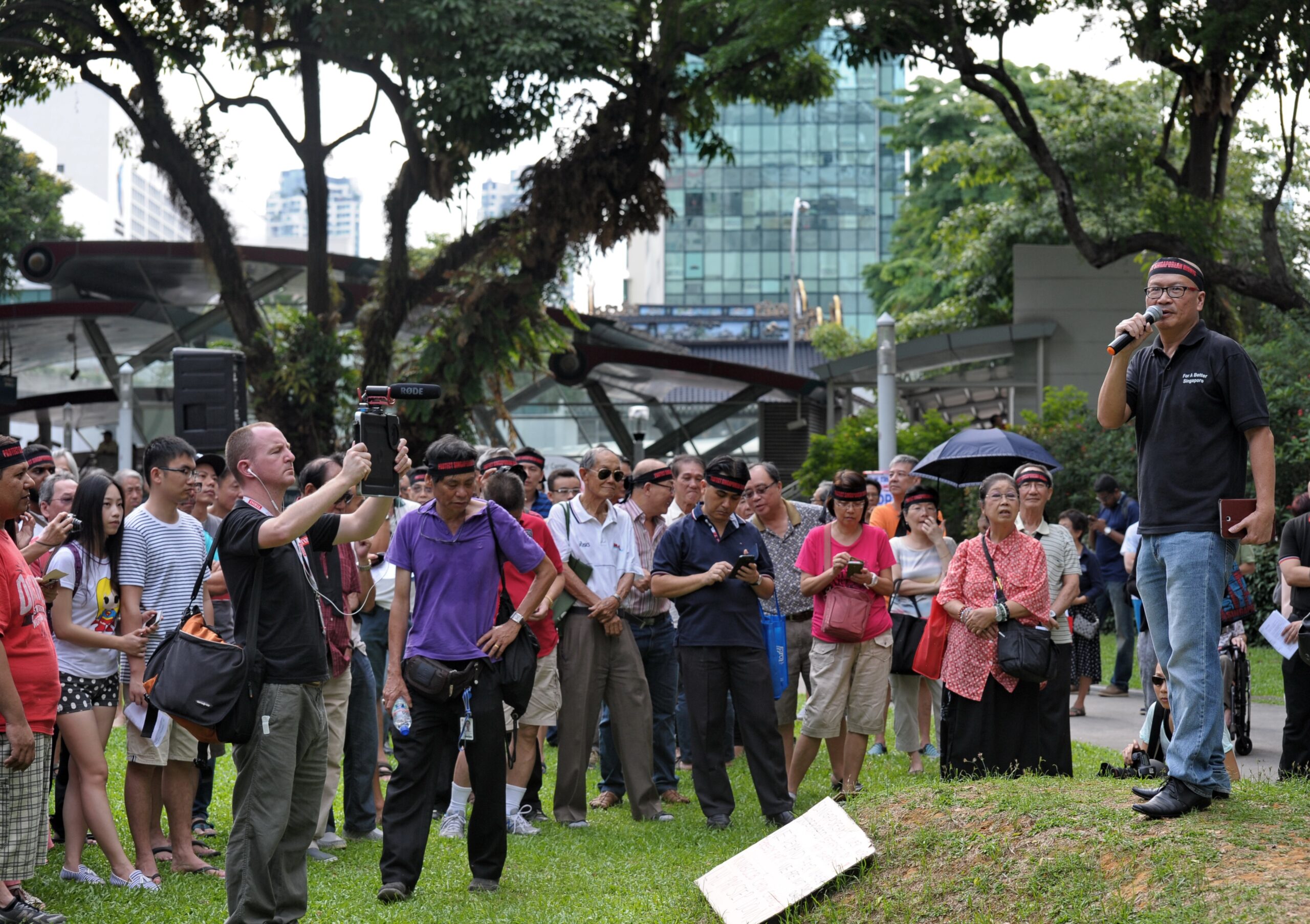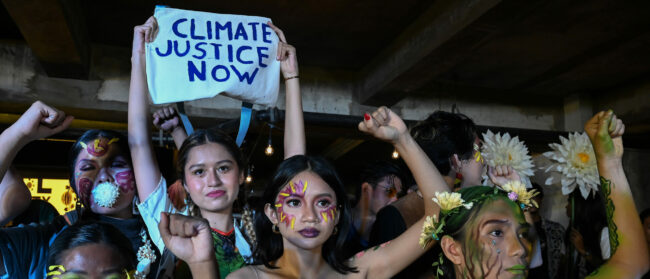More than half of workers in Singapore have experienced discrimination in the past five years.
An eye-opening new survey conducted by gender equality organisation AWARE and consumer research company Milieu Insight revealed that 55% of the Lion City’s workers had been subject to discrimination at work—including discriminatory job advertisements, discriminatory practices in appraisal and promotion, and company policies that disadvantage certain groups.
The survey was conducted at a pivotal moment in Singapore’s journey towards fair workplaces: one year after Prime Minister Lee Hsien Loong announced that the country would enshrine its Tripartite Guidelines on Fair Employment Practices (TGFEP) into formal anti-discrimination legislation—thereby placing a new legal obligation on all employers in Singapore to adhere to the TGFEP’s principles of fair employment.
One thousand respondents, nationally representative by age, gender and race, were polled for the landmark survey, which adopted an expansive definition of discrimination encompassing direct discrimination, indirect discrimination and discrimination-related harassment. The broad range of discrimination covered is unprecedented in Singapore and reveals a hidden underside of widespread injustice in the Singaporean workplace.
Direct discrimination is only one puzzle piece
A common misconception is that workplace discrimination is clear-cut: e.g. recruitment processes that specify the exclusion of certain races; insults or belittlement at the hands of colleagues or superiors; or outright firing after disclosing one’s maternity status. Yet this is not always the case.
Direct discrimination results when someone is treated differently due to their characteristics, such as gender, race, disability or age. Indirect discrimination occurs when an organisation-wide policy puts marginalised groups at a disadvantage: For example, a blanket ban of head coverings in the workplace, though it applies to all employees, will disproportionaly affect those who don hijabs. And discrimination-related harassment refers to unwelcome conduct, based on an individual’s traits, that creates a hostile work environment.

The most common experience of discrimination reflected in the survey was unfair company policies or practices, such as prohibitions against flexible work arrangements, which disadvantage those with caregiving responsibilities—18% of respondents recounted such behaviour. (Caregiving and family responsibilities, it should be noted, fall disproportionately on women.) This was followed by discriminatory employment practices in relation to performance appraisal and promotion (17%), such as receiving a poor performance appraisal following the disclosure of their pregnancy, disability or health conditions.
Another 17% recounted job advertisements that mandated preference for certain characteristics not relevant to the job scope. Examples given in the survey included preference for a certain race, gender or persons speaking a particular language.
Some groups are more vulnerable than others
The most common grounds of discrimination as reported by respondents were race (41% of those who faced discrimination), age (35%) and gender (23%).
If we drill down into the characteristics of these discrimination victims, we get a clearer picture of the relative vulnerability of particular demographics. Four groups of respondents stood out as reporting a higher incidence rate than average: 89% of minority races experienced discrimination compared to 44% of the majority Chinese race; 78% of persons with disabilities compared to 50% of those without; 68% of LGBTQ persons compared to 56% of those who did not identify as LGBTQ; and 58% of women compared to 53% of men.
More must be done to build a culture of inclusivity, respect and, dare I say, appreciation for people with disabilities”
Edgar, employee
None of this should surprise, considering the relative lack of understanding in Singapore around disability, diverse sexual orientations and gender identities, and the many challenges that stymie working women, such as caregiver burden, maternity and even period pains. When we consider that many individuals exist at the intersection of more than one of these identities, their vulnerability becomes even more pronounced.
One person with disabilities who faces workplace discrimination is Edgar (not his real name), who has osteoarthritis. “Every step I take is painful. It hurts when I stand up or try to sit down,” he says. “Recently, I’ve needed a wheelchair to minimise the pain when I move over longer distances.”
However, after Edgar started using his wheelchair at work, he noticed a change in his employer’s demeanour. “My employer became impatient and would show disdain for me. Some days, I greeted them and was treated as if I was invisible. They also told me off for using the wheelchair at the workplace, claiming that I was damaging the property, especially at various access points.”
Frustratingly, his employer doesn’t display any understanding of Edgar’s condition. “They keep telling me to sign up with a gym to lose weight and therefore minimise the pain. Despite the doctor’s notes, they seem to have concluded that I am lazy and whinging over nothing. My job should not be a physically demanding one, but my employer seems to think that I am not pulling my weight if I don’t do anything physical at the workplace, like moving large boxes or furniture around, on top of my existing duties.”
When he asked if he could speak to management about facilitating his movement around the workplace, Edgar’s request was initially ignored. “When I repeated it in writing, through the proper channels of communication, I was labelled a troublemaker, my actions deemed treacherous. My employer even went so far to suggest that I was being difficult when I provided medical letters to explain my condition.”
Edgar then expressed a desire to clarify his situation with management. While he hoped to discuss solutions regarding accessibility to and around the workplace, however, “it became more of a witch hunt: Higher-ups used the occasion to tell me off for being inconsiderate and not getting approval to use such assistive devices at the workplace. There was even some insinuation that I may stand to lose my job.”
After this slew of direct discrimination, lack of reasonable accommodations and open hostility from colleagues, Edgar approached AWARE’s Workplace Harassment and Discrimination Advisory (WHDA) and is receiving emotional support. “More must be done to build a culture of inclusivity, respect and, dare I say, appreciation for people with disabilities,” he says.
Barriers to seeking help
The negative reactions Edgar faced when he tried to discuss his situation with those at work may indicate why many might find discrimination hard to report. The AWARE survey found that 54% of those who had faced discrimination did not report it to any channels (e.g. Human Resources, a boss or senior, Ministry of Manpower and so on). When asked why not, 36% said they did not believe that the discrimination was “severe” enough; 30% said they did not trust authorities to act on the report, and 29% said they did not have enough evidence of discrimination.
Indeed, AWARE’s WHDA has found that employees often hesitate to report their experiences when their companies have a history of inaction. These employees often express the fear that their companies will retaliate against a complaint, e.g. by dismissing them or making their work environments hostile through harassment and bullying. Witnesses to discrimination may also share this fear and hesitate to support them with making a report, leaving victims of certain kinds of discrimination with little supporting evidence for their case.
Sadly, regardless of whether they sought recourse, both the respondents did and did not report faced adverse impacts: An almost identical proportion of those who reported discrimination (29%) and those who did not report (28%) ended up quitting their jobs.
How effective will legislation be?
The upcoming legislation provides an optimistic outlook, but there are still a number of potholes into which the law may yet fall.
One centres on the grounds upon which workers will be protected. The Guidelines set to be enshrined into law protect employees from discrimination on the basis of age, race, gender, religion, marital status and family responsibilities and disability – but not sexual orientation and/or gender identity. In addition, Singapore’s “Enabling Masterplan 2030”, a national roadmap that charts the path towards a more inclusive society, uses a definition of “disability” that does not cover those with mental or other invisible impairments.
These gaps in the existing discrimination lexicon, if enshrined into law as is, may leave out a large chunk of the country’s most vulnerable.
The new legislation should address experiences of discrimination at different stages of the employement cycle, from recruitment to retrenchment, including for example when mothers return to work from maternity leave. It should also cover reasonable accommodation, include discrimination-related harassment as a form of discrimination and, to better enable victims to recognise and report discrimination, contain clearly illustrated examples that explain a range of discriminatory behaviours.
The multicultural harmony upon which Singapore prides itself can only truly be achieved when all groups of people feel equally protected under the law. A fairer and more equitable society is coming into sight on the country’s horizon. Whether it lives up to hopes is currently in lawmakers’ hands.
Corinna Lim is executive director at AWARE, Singapore’s leading women’s rights and gender equality advocacy group.


